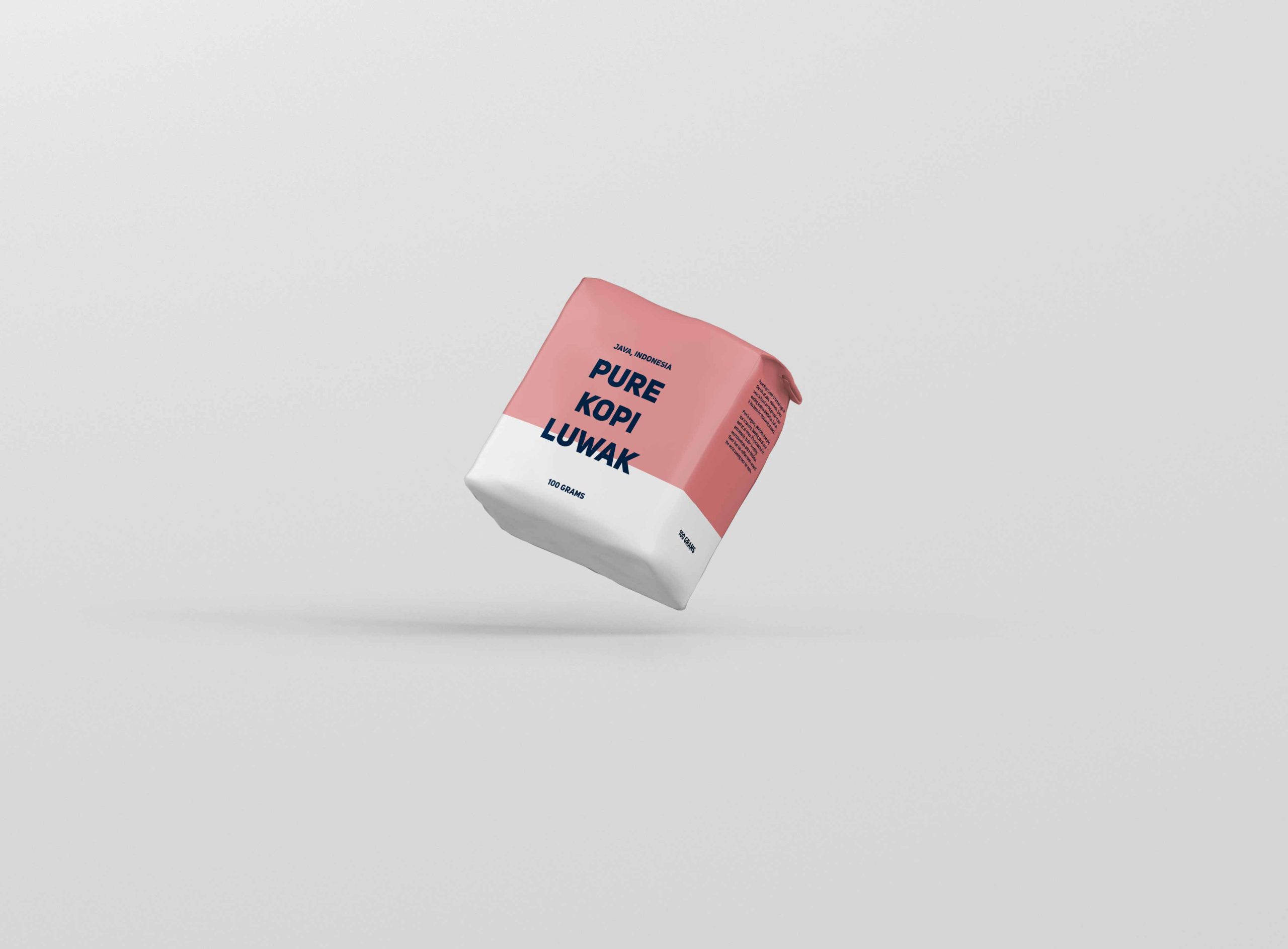How Our Kopi Luwak Price Calculator Works
In the world of coffee, few varieties are as intriguing or as controversial as kopi luwak. Originating from Indonesia, kopi luwak is made from beans that have been digested and excreted by the Asian palm civet cat, a cat-like mammal native to Indonesia.
The unique process imparts a distinctive flavor profile to the beans, making kopi luwak one of the rarest and most highly sought after coffees in the world. To help enthusiasts and curious consumers alike navigate the pricing of this exotic brew, we’ve developed a simple yet highly accurate kopi luwak price calculator. Here’s how the calculator below works.
Kopi Luwak Price Calculator
Arabica beans taste significantly better than Robusta beans. 100% of our beans are Arabica. Organic, pesticide-free beans (like ours) are better for your body and for the planet. Beans foraged from the droppings of wild civet cats both taste better and are the only humane way of making kopi luwak. 100% of our beans come from wild civets.How The Calculator Works
Our kopi luwak price calculator is designed to adjust the price based on three key factors that significantly influence the quality and ethical sourcing of kopi luwak coffee:
- The Type of Coffee Beans (Arabica or Robusta): The choice between Arabica and Robusta beans significantly affects the base flavor profile of your kopi luwak. Arabica beans, known for their smoother, more refined taste, are quite a bit more expensive, so in our calculator, Arabica beans double the price, reflecting their higher market value and desirability.
- Organic & Pesticide-Free Beans: Opting for organic, pesticide-free beans triples the base price, since cleaner, more natural coffee production methods are more expensive and much healthier for the consumer.
- The Source of the Kopi Luwak (Wild or Farmed): Wild kopi luwak, where beans are found on the ground after being naturally digested by civets in the wild, is far more humane and environmentally friendly than farmed kopi luwak. This choice triples the price, underscoring the premium placed on ethical sourcing.
Starting with a base price of $10 per 100 grams, the calculator multiplies this amount by the factors associated with each selection you make.
The price of kopi luwak
Prices for kopi luwak per cup or per kilo vary considerably depending on its origins.
The difference in price between farmed kopi luwak and wild kopi luwak is significant. Wild kopi luwak is not only tastier, but it is also more expensive to make due to the greater effort required in harvesting it.
Pure Kopi Luwak, for example, collects 100% of its beans from the droppings of wild civets. This means the coffee tastes better (because the civets have been eating a natural, balanced diet), but also that the coffee is more expensive, since it’s much more laborious than farmed kopi luwak.
Here are some prices you can expect from different types and quantities of kopi luwak:
Kopi Luwak Price Per Cup
| Price per cup (farmed) | Price per cup (wild) |
| $10-$50 | $20-$100 |
Kopi Luwak Price Per Pound
| Price per pound (farmed) | Price per pound (wild) |
| $50-$100 | $300+ |
In countries that produce kopi luwak, one cup of farmed kopi luwak can be had for as little as $5-$10. Bali is one such example, a popular destination for people who want to try this intriguing brew. Outside the countries of origin, costs rise dramatically. The cost of wild kopi luwak fluctuates between $20 and $100 per cup, and even for farmed kopi luwak, the price sits between $10 and $50.
For those who want to buy kopi luwak by the bag, wild kopi luwak can cost significantly more, since it tastes better and is an ethical alternative to farmed kopi luwak. Low-grade farmed kopi luwak may be purchased at supermarkets in Indonesia for around $50-$100 per pound ($120-$250 per kilo).
When it comes to wild kopi luwak, the sky’s the limit. You can easily find wild kopi luwak selling for more than $1,000 per pound online, and some brands are even more expensive than that.
However, at rates like these, you have to believe that the firm selling kopi luwak is taking a risk. Paying such a high price for a bag of coffee is something to brag about at dinner parties among the rich and famous.
High demand, low supply
According to various sources, annual kopi luwak production varies widely. According to one source, as much as 1,100 lbs (500kg) of wild kopi luwak is produced every year, with an estimated 50 tons (45 tonnes) of farmed kopi luwak produced annually. A 2004 paper published by a professor from Ontario Agriculture College suggests that only around 500 pounds (227 kg) of kopi luwak is manufactured annually.
The added attention given to this uncommon coffee due to films such As The Bucket List, which features Jack Nicholson and his passion for kopi luwak, is only increasing.
How sourcing affects the price of kopi luwak
Wild kopi luwak
Due to the numerous activities involved in its production, wild-sourced kopi luwak costs a significantly higher price. Asian Palm civets are required to make kopi luwak. They may be found throughout southern Asia, consuming coffee cherries as part of their omnivorous diet.
The coffee cherries pass through the civet’s digestive system, but the coffee beans inside are not digested. The cherries are excreted by the civet about a day after consumption. Workers must forage for these wild civets’ feces. As you might expect, this is time-consuming and laborious work in the scorching heat of Asia.
However, the work required to obtain wild civet excrement is compensated by the fact that it produces a superior cup of coffee. This is because wild civets only consume the ripest, red, and delicious tasting coffee cherries. The impact of the coffee cherry’s ripeness on its beans’ taste is significant.
The higher sugar levels present in the ripe fruit impart a delicious sweetness to the beans. Just think of the times you’ve bitten into a piece of fruit that hasn’t had the chance to ripen fully. The sourness is extremely unpleasant, and the fruit is a shadow of what it would have become once ripened.
Wild kopi luwak demands such a high price for two reasons–the extra labor combined with superior taste are why wild kopi luwak demands such a high price compared to farmed varieties.
Farmed kopi luwak
The majority of the world’s kopi luwak is now farmed because of the profitability and great demand, which is sad. The civets are kept in terrible conditions on the farms. They are imprisoned in tiny cages with other civets and have no room to exercise.
To enhance profits, coffee cherries are solely fed to the civets. This has significant ramifications for their health because the coffee cherries alone do not provide enough nutrients.
Production of farmed kopi luwak is simpler than its wild counterpart since the staff does not have to search for animal dung.
However, after the beans have been extracted from the feces during the roasting process, there is still a lot of labor required. The fact is that poor living conditions and low-quality coffee cherries combine to produce an undrinkable cup of kopi luwak coffee.
Is kopi luwak worth the price?
Kopi luwak is marketed as having a distinctive flavor owing to the enzymatic process that the beans go through while inside the civet’s stomach. The coffee is supposed to have less bitterness and acidity, resulting in a pleasant flavor with complex notes.
While this may appeal to those who believe that all coffee is inherently bitter, experts in the business disagree. In recent years, there have been several studies on kopi luwak, and their findings are damning. The Specialty Coffee Association of America (SCAA) judged that kopi luwak has a bad flavor.
Others have only been able to offer the backhanded compliment that there’s nothing special about kopi luwak compared to any other kind of coffee. The decrease in bitterness and acidity and kopi luwak’s smooth texture will be features that some coffee consumers appreciate.
People do not buy kopi luwak for its exquisite flavor. They drink it because of the mystique surrounding one of the world’s rarest and most costly beverages.
There’s no doubting that wild-sourced kopi luwak is superior to farmed kopi luwak. However, at around $600 per kilo, there are so many other delicious coffees on the market that you should try.
Even if you’re in a financial situation that allows you to buy yourself a bag of kopi luwak, the fact that it’s so unethical is reason alone to boycott it altogether.
Civets are sensitive to stress and have a low pain threshold. Because they must live in harsh environments with little food, many become mentally and physically ill, with several dying as a consequence.
Try Pure Kopi Luwak Today
Pure Kopi Luwak is the best of all worlds: organic, pesticide-free Arabica beans sourced from the droppings of wild civets. And because our price comes in well below the standard price for kopi luwak of those qualities, it’s a great deal.
Pure Kopi Luwak is kopi luwak for coffee lovers. For a widely-loved coffee at a fair priced, try our renowned kopi luwak today.

